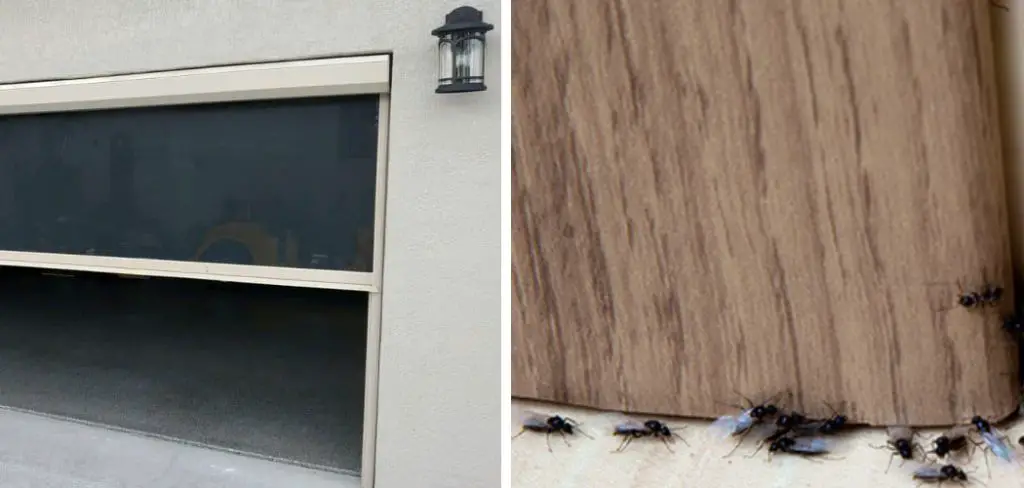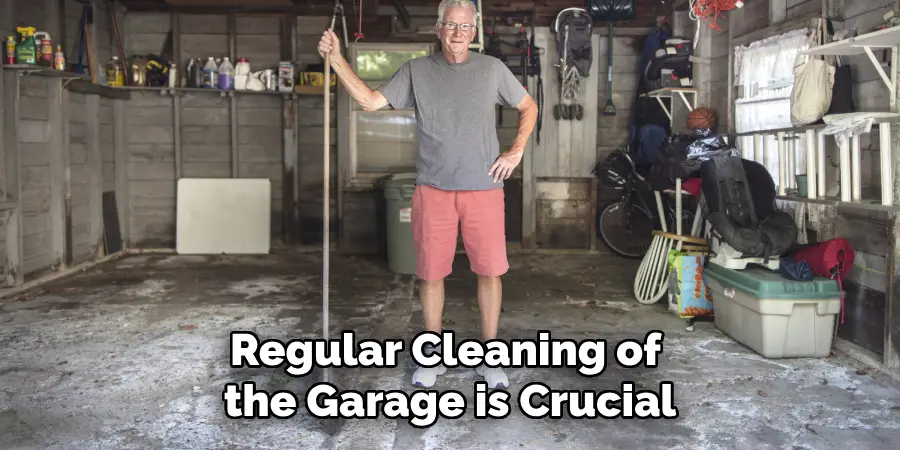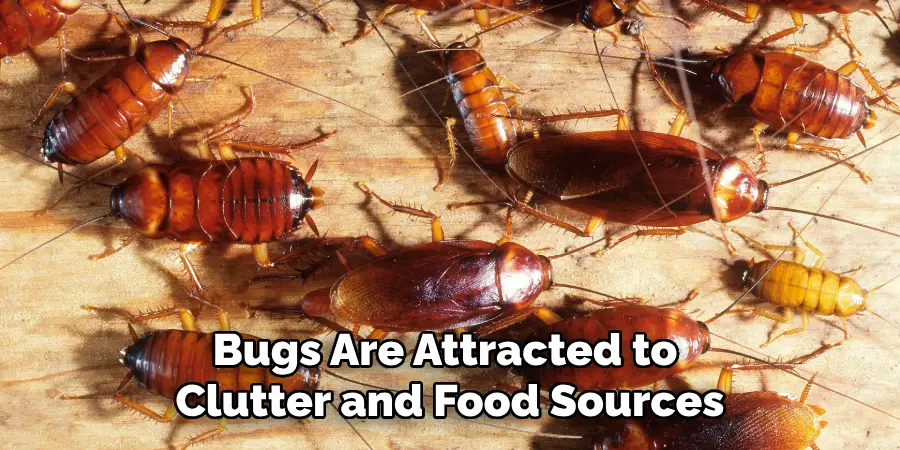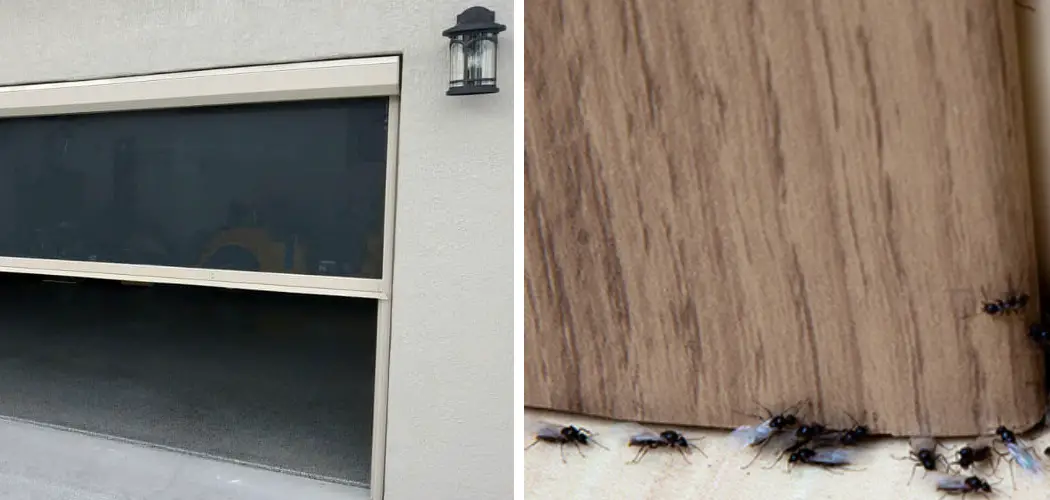A garage serves as a versatile space in our homes, offering storage for vehicles, tools, and a multitude of belongings. Unfortunately, it can also become a haven for unwelcome guests – bugs and pests.

Keeping your garage bug-free is essential not only for maintaining the integrity of your stored items but also for preventing these critters from infiltrating your living spaces. In this article, we’ll explore how to bug proof your garage, providing you with effective strategies and practical tips to create a pest-free environment.
From sealing gaps and cracks to selecting the right type of door and implementing proper storage practices, we will guide you through the essential considerations to fortify your garage against insects, rodents, and other nuisances. Whether you’re an avid DIYer or simply want to safeguard your garage, this comprehensive guide will help you achieve a bug-free oasis within your home.
Importance of Bug-Proofing the Garage
Bug-proofing your garage is essential to maintain a clean, safe and healthy environment in your home. As garages are often used for storing various items, they can easily become a breeding ground for bugs and other pests. Bugs such as ants, cockroaches, spiders, and rodents can find their way into the garage through small cracks or gaps in doors and windows.
This not only creates an unsightly and unhygienic situation but also poses a threat to the health of your family. Therefore, taking proactive measures to bug-proof your garage is crucial.
Preventing Pest Infestations
The first step towards bug-proofing your garage is to prevent pest infestations in the first place. Make sure to keep all food items tightly sealed in containers and remove any spilled food immediately. Regularly clean your garage and get rid of any clutter, as it can attract pests.
Keep an eye out for potential entry points, such as gaps in walls or around windows and doors, and seal them with caulk or weather stripping.
Proper Storage
Storing items properly is another important aspect of bug-proofing your garage. Make sure to store all items in sealed containers or plastic bags, especially if they are food-related. This will not only keep bugs away but also help in organizing your garage and making it easier to clean.
Regular Cleaning
Regular cleaning of the garage is crucial for keeping bugs away. Sweep and mop the floor regularly, and vacuum any nooks and corners where pests can potentially hide. Wipe down shelves, cabinets, and other surfaces to remove any crumbs or spills that can attract bugs. Also, make sure to dispose of garbage and recycling regularly.

Natural Repellents
Another effective way to bug-proof your garage is by using natural repellents. Planting herbs such as mint, lavender, or sage near the entrance of your garage can help repel bugs. You can also place cedar blocks or sachets inside the garage to keep pests at bay. These natural repellents not only help in keeping bugs away but also add a pleasant aroma to your garage.
10 Methods How to Bug Proof Your Garage
1. Seal Cracks and Gaps
The first step to bug-proofing your garage is to seal any cracks or gaps in the walls, floors, and ceilings. This will help to prevent bugs from entering the garage through small openings. You can use caulk or expanding foam to fill any gaps or cracks that you find. Additionally, make sure that all windows and doors are properly sealed with weatherstripping or door sweeps.
2. Install Screens
Installing screens on windows and doors is another effective way to keep bugs out of your garage. Screens will help to keep out flying insects such as mosquitoes and wasps while also allowing fresh air into the space. Make sure that all screens are securely installed and free from holes or tears so that bugs cannot enter through them.

3. Keep Your Garage Clean
Keeping your garage clean is essential for preventing bug infestations. Vacuum regularly and remove any clutter, as this will make it harder for bugs to hide in your garage. Additionally, sweep away cobwebs from corners and shelves as these can attract insects such as spiders and flies.
4. Store Food Properly
Storing food properly is key for preventing bug infestations in your garage. Make sure that all food items are stored in airtight containers or bags so that they do not attract pests such as ants or cockroaches. It is also important to regularly check food containers for signs of infestation, such as droppings or eggs, and discard any contaminated items immediately.
5. Remove Standing Water
Standing water can attract a variety of pests into your garage, so it’s important to remove any standing water sources whenever possible. Check around the perimeter of the garage for puddles of water and repair any leaks or broken pipes that may be causing them.
Additionally, consider installing a dehumidifier if there is excess moisture in the air, which could be causing condensation on surfaces inside the garage.
6. Use Repellents
Using repellents can be an effective way to keep bugs out of your garage without having to use harsh chemicals or sprays inside the space itself. Look for natural repellents such as cedar chips which can be placed around the perimeter of the garage to repel insects without harming them directly.. Additionally, you can purchase electronic repellents that emit high-frequency sounds designed to drive away certain pests, such as mice and rats, without harming them either physically or chemically.

7. Install Outdoor Lighting
Installing outdoor lighting around your home is an effective way to deter nighttime insect activity near your garage door area. Place motion sensors near entry points so that lights come on when movement is detected – this will help discourage bugs from entering the area at night when they are most active.
Additionally, yellow “bug lights” can be used instead of traditional white lightbulbs since these emit a wavelength of light that attracts fewer insects than other types of bulbs.
8. Eliminate Hiding Places
Eliminating hiding places for insects inside your garage is essential for keeping them out. Remove piles of leaves, grass clippings, woodpiles, compost piles, etc., since these provide ideal breeding grounds for many types of bugs, including roaches, fleas, and ticks.
Trim back shrubs near entry points so that there are fewer places where insects can hide during daylight hours. Finally, store items off the floor wherever possible since this makes it more difficult for pests like rodents and spiders to hide beneath them.
9. Use Natural Deterrents
Using natural deterrents around your home is an effective way to repel insects without using harsh chemicals. Planting herbs such as mint near entry points has been shown to deter certain flying insects like mosquitoes due to their strong scent. Similarly, citrus peels have been known to repel ants due to their acidic smell – simply place peels near areas where ants have been seen entering your home.

Finally, diatomaceous earth (DE) powder has been known to act as a natural insecticide when sprinkled near entry points – DE works by dehydrating insects upon contact, thus killing them within 24 hours without posing harm to humans or animals living nearby.
10. Call a Professional Exterminator
If you’ve tried all other methods but still have an issue with insects invading your home, then it may be time to call a professional exterminator who specializes in dealing with residential pest control issues. A professional exterminator will be able to assess what type of insect problem you have and then recommend the best course of action needed to eliminate it.
They also often use specialized equipment techniques that may not be available general public – thus greatly increasing chances of success in eliminating troublesome bug problems.
Things to Consider When Bug Proofing Your Garage
When it comes to bug-proofing your garage, there are a few things that you should keep in mind. Bugs can enter your garage through various entry points, such as cracks in the walls or gaps around doors and windows. They can also be brought in on items that you store in your garage, like boxes or outdoor gear.
In order to effectively bug-proof your garage, you should consider the following:
Seal all entry points
The first step in bug-proofing your garage is to seal off any potential entry points. This includes filling in cracks and gaps with caulk or weatherstripping around doors and windows. You should also make sure that any vents or openings are covered with mesh screens.
Keep it clean
Bugs are attracted to clutter and food sources. To prevent them from entering your garage, it’s important to keep the space clean and free of debris. Regularly sweep or vacuum the floors, wipe down surfaces, and remove any standing water.

Store items properly
As mentioned earlier, bugs can hitch a ride into your garage on items that you store there. To prevent this, it’s important to properly store your belongings. Use sealed containers or plastic bins to store items like clothing, outdoor gear, and tools.
Add lighting
Bugs are also attracted to dark and damp areas, so adding lighting in your garage can help deter them from entering. Install motion-sensor lights near entry points and make sure that all areas of your garage are well-lit.
Use bug repellents
There are various types of bug repellents that you can use in and around your garage to prevent bugs from entering. This includes sprays, sticky traps, and electronic insect repellent devices. Be sure to follow instructions carefully and keep them out of reach of children or pets.
Conclusion
Overall, with the right preparation and proactive pest control, you can keep your home or business garage bug-free. When inspecting and checking for bugs it’s important to remember all cracks and crevices where insects tend to hide. You should also regularly treat any infested areas with a registered insecticide.
Additionally, store all food items in sealed plastic bags or plastic containers and be sure to clean up spills immediately to reduce the chances of an infestation. Finally, be sure stock up on essential items like door sweeps that will help to seal out unwanted creatures from entering your home or business. Now you know how to bug proof your garage – so go forth and get started!
I am Rick. I grew up helping my dad with his handyman service. I learned a lot from him about how to fix things, and also about how to work hard and take care of business. These days, I’m still into fixing things- only now, I’m doing it for a living.
I’m always looking for new ways to help people grow and develop. That’s why I have created this blog to share all my experience and knowledge so
that I can help people who are interested in DIY repair.

